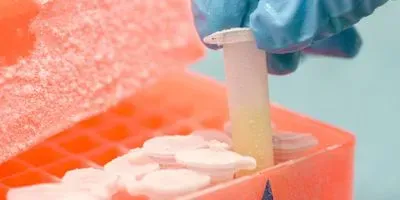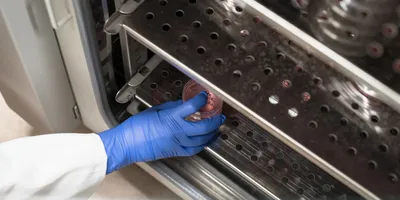When designing most any life science lab or running an existing one, scientists need cold storage. In many cases, scientists need lots of cold storage, but less can be more. It’s possible to improve the efficiency of cold storage by design or renovation.
In practice, cold storage is finite. As Allison Paradise, founder and CEO of My Green Lab (San Diego, CA), says, “Ultimately, cold storage is limited by available floor space.” Plus, if a lab manager does want to add more cold storage in a lab, even more than floor space matters. “It’s expensive!” Paradise says of cold storage. “It’s expensive in upfront costs, and it’s expensive to maintain—electricity, general maintenance costs.”
So, instead of thinking of it as just a freezer, realize that cold storage plays a part in a lab’s entire ecosystem. “As a result of lab sustainability efforts—including the increasing number of research institutions with green lab programs—and efforts like the International Laboratory Freezer Challenge, there is growing awareness and growing action by scientists to minimize research’s footprint on the planet, including being efficient with cold storage, such as purchasing energy-efficient units, [and] raising temperatures on ultra-low temperature freezers to −70 from −80 degrees Celsius,” says Kathryn Ramirez-Aguilar, green labs program manager at the University of Colorado Boulder. “I have been impressed with the actions that lab members are willing to take at CU Boulder because they want to do their part in minimizing their footprint.”
More from less
In addition to the footprint, other factors do matter. “From a physical perspective, it comes down to maximizing the interior useable space while limiting the exterior footprint of the equipment,” says Josh Lewis, global product manager, ultra-low temperature freezers at Thermo Fisher Scientific (Asheville, NC). “This optimization has been a key design consideration in recent years, especially in ultra-low devices where vacuum insulation panels have increased interior volumes by reducing the necessary insulation thickness of the cabinet walls.”
How scientists store samples also impacts the available freezer space. “In an individual unit, one can make more space by using high density-storage formats or storing samples in appropriately-sized containers,” Paradise explains. “For example, don’t use a 50-milliliter conical tube when a 15-milliliter tube will do.” She adds that scientists can also make more room in a cold storage unit by “maintaining the unit properly to avoid ice buildup and discarding old samples when they aren’t needed any more.”
To keep the samples in cold storage under control, some standard procedures really help. “Implementing an inventorying system works best for a lab and enables the lab to have good knowledge of what items are in its cold storage units and where they are located,” Ramirez-Aguilar says. “This makes it easier to purge samples that are no longer needed, thus making it easier to make more space for new samples within existing units.”
Top tips
For top efficiency, a research institution can develop a core of cold storage units run by a manager, and allow scientists to rent space. “This not only would provide lab members with support for good sample management, it also keeps labs from having to use their individual lab space for cold storage units,” Ramirez-Aguilar explains.
The space that can be used for cold storage also depends on energy efficiency. “The more units there are in a room, the more heat that gets rejected into the room, which drives up the HVAC bill,” Lewis explains. For example, he points out that using a variable speed system can reduce energy consumption “by more than 50 percent and reduce the heat rejected to the room by the same amount.”
Where possible, scientists and research institutions should design efficient cold storage into a facility. That headstart creates the best outcome.









